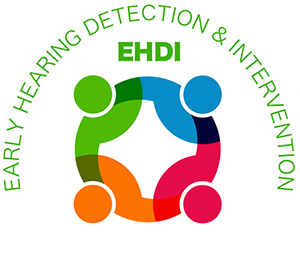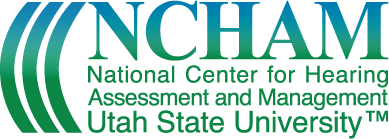Last Modified: 09/08/2023
IV. Adherence to Existing Professional Standards and Protocols
Implementation of tele-audiology is subject to the same standards as delivering traditional in-person audiological services. Therefore, programs and specialists who intend to provide tele-audiology need to abide by these existing standards:
Highlighted sections from the JCIH 2019 Report: Pediatric Diagnostic Audiology
Key Components of Audiological Assessment for Infants:
- Auditory brainstem response is the gold standard test for threshold estimation for infants and children who cannot complete behavioral audiologic assessment. ABR provides ear- and frequency-specific threshold estimates that are necessary for the diagnosis of the type, degree, and configuration of hearing loss and provision of amplification (Gorga et al., 2006).
- Measures of middle ear function should be completed as part of the diagnostic audiologic process for infants and young children. Either tympanometry or wideband reflectance can be used to characterize middle ear function (Hunter et al., 2013).
- Acoustic reflexes are an important test of middle ear function and the integrity of auditory brainstem pathways (de Lyra-Silva et al., 2015).
- Otoacoustic emissions provide important information about the integrity of the outer hair cells of the cochlea and provide critical information about the differential diagnosis of auditory neuropathy spectrum disorder and sensorineural hearing loss (Gorga et al., 2000).
- Behavioral assessment of hearing is the gold standard for estimation of hearing thresholds. Visual reinforcement audiometry (VRA; for infants 6–24 months; Widen et al., 2005) and condition play audiometry (CPA; for toddlers 24+ months; Norrix, 2015) are established methods based on conditioned responses to sound.
American Speech Language and Hearing Association (ASHA) Standards
American Academy of Audiology (AAA)
AAA states that “diagnostic and rehabilitative telehealth/telemedicine services should always be provided by, or supervised by, a qualified practitioner.” Recognizing the challenges in accessing qualified specialists, the AAA 2008 Guidelines state “telemedicine services should be primarily provided to individuals who have limited access to [specialists] in their communities.”
Joint Committee on Infant Hearing (JCIH)
Example Protocols
References
- Bagatto, M., Easwar, V., El-Naji, R., Hyde, M., Malandrino, A., Martin, V., Pigeon, M., Purcell, D., Scollie, S., & Witte, Jill. (2018, October 31). Protocol for auditory brainstem response-based audiological assessment. Ontario Infant Hearing Program, Version2018.01.
- The American Speech-Language-Hearing Association. (2006, December 21). Preferred practice patterns for the profession of audiology. https://www.asha.org/policy/pp2006-00274/ (2019).
- Year 2019 Position statement: Principles and guidelines for early hearing detection and intervention programs. Journal of Early Hearing Detection and Intervention, 4(2), 1-44. DOI: 10.15142/fptk-b748


